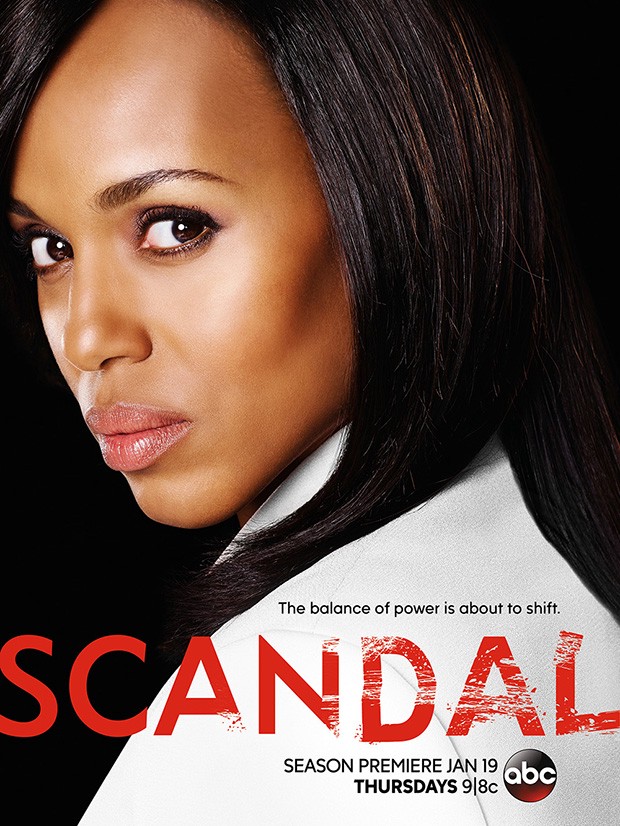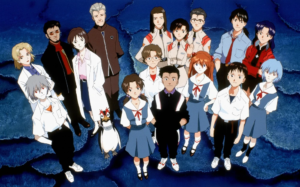#OscarsSoWhite, TV Working Not To Be

Promo for the sixth season of ABC ’s ‘Scandal’. Photo courtesy of ABC.
#OscarsSoWhite happened for a reason: the Academy Awards were as white as a blank page in back to back years. In both 2015 and 2016, Twitter ran wild mocking the injustice, pointing out the lack of people of color (POCs) in prominent & diverse roles. This has always been an issue, but the lack of POC nominees in both years’ ceremonies exacerbated it. In accord, there was a spotlight shown on who had been picking up the slack: Television.
This isn’t to say that television doesn’t have its faults — 2 Broke Girls is still on the air. However, there is a diverse range of POCs being cast in strong and varied roles on television, which is worthy of praise. At the past two Emmy Awards, over 20% and 25% of the nominees for major acting awards were people of color. That too is a low bar, but still a hurdle the Academy Awards couldn’t clear.
What’s helped POCs on T.V. is this phenomenon of “peak television”. The phrase, coined by FX CEO John Landgarf, notes since there is a lot of good television out now, shows are getting time. If a program has a steady audience and critical acclaim, it’s not getting cancelled as easily.
ABC’s Scandal is a good example. In it’s early days of 2012, the show about a D.C. “fixer” and her business could not find its audience. The Shonda Rhimes-backed show was a seven episode midseason replacement, ranked around 62nd for the 2011–12 tv season. Although it was anchored by now-Emmy presence Kerry Washington, it had a third of the episodes of a normal drama, setting it behind the pack. Nevertheless, it found its audience, thanks to being really damn good, a strong social media presence, and actually getting the time to grow within & outside of its main audience. It was ranked 8th by its 4th season, and is a consistent ratings leader.
Scandal’s success led to more chances, like How to Get Away With Murder, Empire, and other primetime soaps.Comedies like Black-ish and Jane the Virgin are beneficiaries of peak television because they’re good shows featuring diverse casts, dealing with a variety of themes and gaining critical acclaim for it. There’s more authenticity to a comedy about an affluent black family trying to find it’s place because it’s relatable.
Authenticity is a divergent point for film and television. Films have skirted authenticity by keeping actors in roles by setting barriers and limiting opportunity, otherwise known as whitewashing. From Breakfast at Tiffany’s and Short Circuit to The Last Airbender and the upcoming Ghost in the Shell, studios have taken characters that were meant to be people of color and made them white. It builds the idea of stereotypes in some cases, but also that white faces make for the best character representations. It’s dishonest to not recognize that poignant characters come in all shapes, sizes, and races. This isn’t one size fits all.
Television at least has roles challenging this set of ideas. Look to the recent variety of Asian men that are playing romantic leads, like Vincent Rodriguez III on the CW’s Crazy Ex-Girlfriend or Ki Hong Lee from Netflix’s Unbreakable Kimmy Schmidt. It’s a thing, so damn what Steve Harvey says. They’re more than “asexual sidekicks” to the leads — they’re complex and can guide strong stories.
Authenticity is recognizing this — that people are a part of a variety, not a single size. This is what audiences are asking for most, causing networks to seek it out. You diversify your shows, you diversify your audience. You diversify your audience, you diversify your advertisers. You diversify your advertisers, you can diversify your shows, and so the circle starts.
However, there are still issues that need to be worked through. Both film and television lag on behind-the-camera diversity in a variety of ways. Variety Magazine found that for this current television season, showrunners for new shows on major network TV were 90% white and 80% male. In addition, a study from USC found that 3.4% of film directors from September 2014 through August 2015 were women.
The one thing that is really important is that for representation on the screen to happen, the numbers behind the screen need to increase. Statistically, if a non-white cis-gendered male is running a show, there is a more diverse writer’s room, leading to a more diverse cast. See the writers room of Fresh Of the Boat, headed by Iranian-American Nahnatchka Khan, whose writers are about 50% women and racially diverse.
All in all, #OscarsSoWhite drew attention to the fact that film wasn’t representing the wide spectrum of people with diverse stories. Sure, this year’s nominees feature black people in every category, but for it to be a win, it needs to continue. Television isn’t perfect, but hell — at least it has been trying for longer.



